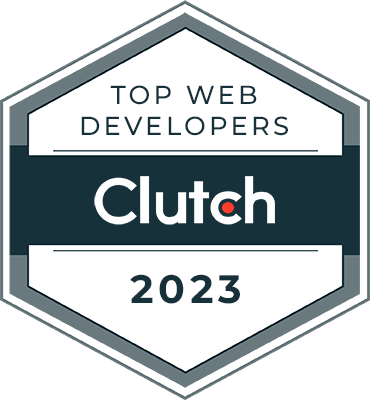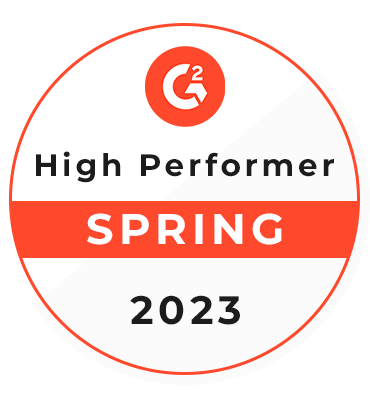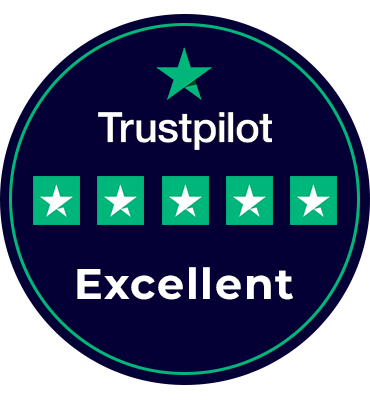How AI and Automation Can Speed Up Your MVP Development | Fulminous Software
Shyam Singh
Last Updated on: 25 September 2025
In today’s fast-paced digital economy, speed is everything. Startups and enterprises can no longer afford to spend years building a product before validating it in the market. This is why Minimum Viable Products (MVPs) have become the cornerstone of modern product development.
But even MVPs take significant time and resources to design, develop, and test. Here’s where Artificial Intelligence (AI) and Automation enter the picture. By leveraging AI-powered tools, machine learning models, and automation workflows, businesses can streamline every stage of MVP development—from ideation and prototyping to testing and scaling.
In this guide, we’ll explore:
- Why AI and automation are transforming MVP development
- Practical ways to use AI in product ideation, prototyping, testing, and iteration
- Automation strategies to save time and reduce costs
- Real-world examples of startups leveraging AI for faster MVP delivery
- Step-by-step framework for building your AI-powered MVP
- Challenges, future trends, and practical FAQs
By the end, you’ll see why adopting AI and automation isn’t just an advantage—it’s essential for faster, smarter, and more cost-effective MVP development in 2025 and beyond.
1. Understanding MVP Development in 2025
An MVP is the first functional version of a product that includes only core features to test assumptions and validate market demand. Traditionally, building MVPs required:
- Long development cycles
- Manual coding and testing
- Repeated iterations based on feedback
But now, the rise of AI-driven product development is changing everything.
Traditional MVP Challenges
- High costs: Hiring developers, designers, and testers can be expensive.
- Time delays: Manual prototyping and testing can take months.
- Risk of failure: Building features customers don’t want wastes resources.
- Limited scalability: Iterations are often slow, making it hard to pivot quickly.
AI-Powered MVP Advantages
- Faster prototyping with generative design tools
- Smarter decisions through predictive analytics
- Automated workflows to speed up development and testing
- Cost optimization by reducing human labor and errors
2. How AI Accelerates MVP Development
Artificial Intelligence isn’t just a buzzword—it’s a game-changing accelerator for MVPs. Let’s break down its role at each stage of development.
a) AI in Idea Validation
- Market Research Automation: AI scrapes and analyzes market data to identify demand and trends.
- Competitor Analysis: Tools like Crayon or SimilarWeb analyze competitor products and user behavior.
- Customer Insights: NLP-based sentiment analysis helps you understand what users really want.
Example: A fintech startup could use AI to analyze user complaints about traditional banking apps and build an MVP that solves those exact pain points.
b) AI in Prototyping and Design
- Generative AI for UI/UX: Tools like Figma AI and Uizard automatically generate user interface prototypes.
- User Behavior Prediction: AI predicts how users might interact with your product to refine usability early.
- Content Creation: AI generates mock content (copy, graphics, chatbot flows) for prototypes.
Example: Airbnb’s early MVP was just a simple website. If launched today, AI could automatically generate UI screens, copy, and even pricing strategies.
c) AI in Development
- AI Code Generators: Tools like GitHub Copilot or Tabnine speed up coding.
- Low-Code/No-Code Platforms: Bubble, OutSystems, and AI-powered builders enable faster builds.
- Automated Documentation: AI auto-generates APIs and workflow diagrams.
Result: Instead of weeks, basic MVPs can now be built in days.
d) AI in Testing and Quality Assurance
- Automated Bug Detection: Tools like Testim or Applitools detect bugs instantly.
- Predictive QA: AI models predict where bugs are likely to appear.
- Load & Performance Testing: AI simulates user behavior at scale.
e) AI in Feedback and Iteration
- Sentiment Analysis: AI analyzes user reviews and surveys.
- Feature Prioritization: Machine learning identifies which features matter most.
- A/B Testing Automation: AI runs experiments and suggests optimizations.
Example: Spotify uses AI to analyze user behavior and recommend product features that keep engagement high.
3. Role of Automation in MVP Development
AI provides intelligence, while automation handles repetitive tasks. Together, they turbocharge MVP delivery.
Key Areas Where Automation Helps
- Project Management: Tools like Jira with automation streamline task assignments.
- DevOps & CI/CD: Automated pipelines reduce manual errors.
- Customer Onboarding: Automated chatbots improve onboarding speed.
- Marketing Automation: Campaigns validate MVP adoption at scale.
- Analytics Automation: Dashboards track KPIs in real time.
Example: A SaaS startup can automate CI/CD pipelines, so every new MVP feature is instantly tested and deployed.
4. Step-by-Step Guide: Building an AI-Powered MVP
- Market Research & Validation: Use AI-powered tools like Crunchbase, SimilarWeb, and SEMrush to identify demand and forecast adoption.
- Prototype with AI Tools: Use Uizard or Figma AI to generate wireframes and GPT-based tools for landing pages.
- Build with AI-Assisted Development: Utilize Copilot and integrate pre-trained ML models.
- Automate Testing: Run AI-driven unit, integration, and UI tests.
- Automate Feedback Collection: Deploy AI chatbots and sentiment analysis tools.
- Continuous Improvement: Automate A/B testing and use ML to track adoption patterns.
5. Benefits of AI + Automation in MVP Development
- Faster Time-to-Market: Build and launch MVPs in weeks, not months.
- Cost Savings: Reduce reliance on large development teams.
- Smarter Decisions: Data-driven insights minimize risk.
- Scalability: Easily scale from MVP to full product.
- Enhanced User Experience: AI personalization boosts engagement.
6. Real-World Examples
- Dropbox: Originally validated with a demo video. Today, AI could create interactive prototypes in hours.
- Zappos: Started with manual shoe delivery. AI automation could streamline logistics instantly.
- Win11 Fantasy Sports App (by Fulminous Software): Used automation in backend systems to accelerate MVP testing and scaling.
7. Challenges and Considerations
- Data Dependency: AI models require quality data.
- Integration Complexity: AI tools must integrate smoothly.
- Cost of AI Tools: Premium platforms may be expensive.
- Over-Reliance on AI: Human creativity is still essential.
8. Future of AI-Powered MVPs
- Generative AI for Full-Stack Apps: End-to-end MVP creation.
- Hyper-Personalization: MVPs tailored to niche audiences.
- AI-Augmented Teams: Smaller teams, bigger impact.
- Self-Optimizing Products: MVPs that evolve automatically through AI.
9. FAQs
Q1. How can AI accelerate MVP development?
AI accelerates MVP development by automating coding, generating UI/UX designs, predicting user behavior, and providing real-time analytics for smarter product decisions.
Q2. What role does automation play in speeding up MVPs?
Automation reduces manual tasks like testing, deployment, feedback collection, and continuous integration, allowing teams to launch MVPs faster and more efficiently.
Q3. Can AI and automation reduce MVP development costs?
Yes, by minimizing manual labor, optimizing workflows, and reducing rework, AI and automation significantly lower development costs while maintaining product quality.
Q4. Which industries benefit most from AI-powered MVP development?
Industries such as fintech, healthcare, SaaS, e-commerce, EdTech, and on-demand services benefit the most due to data-driven insights, faster iterations, and enhanced personalization.
Q5. Are AI-powered MVPs suitable for startups?
Absolutely. Startups can leverage AI and automation to validate ideas quickly, launch faster, and scale their products efficiently without large development teams.
Q6. How do AI tools improve MVP testing?
AI-powered testing tools automatically detect bugs, predict potential issues, run performance tests, and provide actionable insights to enhance the quality and reliability of MVPs.
Q7. Can automation help after MVP launch?
Yes, automation assists in continuous deployment, user onboarding, analytics tracking, and A/B testing to refine the product post-launch for better engagement and retention.
Conclusion
The era of manual, slow MVP development is over. AI and automation are revolutionizing how startups and enterprises bring products to market. By leveraging AI for ideation, prototyping, development, and iteration—and automation for testing, deployment, and scaling—you can launch faster, save costs, and stay ahead of competitors.
Whether you’re a startup founder or part of an enterprise innovation team, adopting AI-powered MVP strategies in 2025 will not just help you survive—it will help you thrive.

 Verified
Expert in Software & Web App Engineering
Verified
Expert in Software & Web App Engineering
I am Shyam Singh, Founder of Fulminous Software Private Limited, headquartered in London, UK. We are a leading software design and development company with a global presence in the USA, Australia, the UK, and Europe. At Fulminous, we specialize in creating custom web applications, e-commerce platforms, and ERP systems tailored to diverse industries. My mission is to empower businesses by delivering innovative solutions and sharing insights that help them grow in the digital era.
Partner with Top-Notch Web Application Development Company!
Discuss your Custom Application Requirements on info@fulminoussoftware.com or call us on +1-903 488 7170.
15 Days Risk-Free Trial

